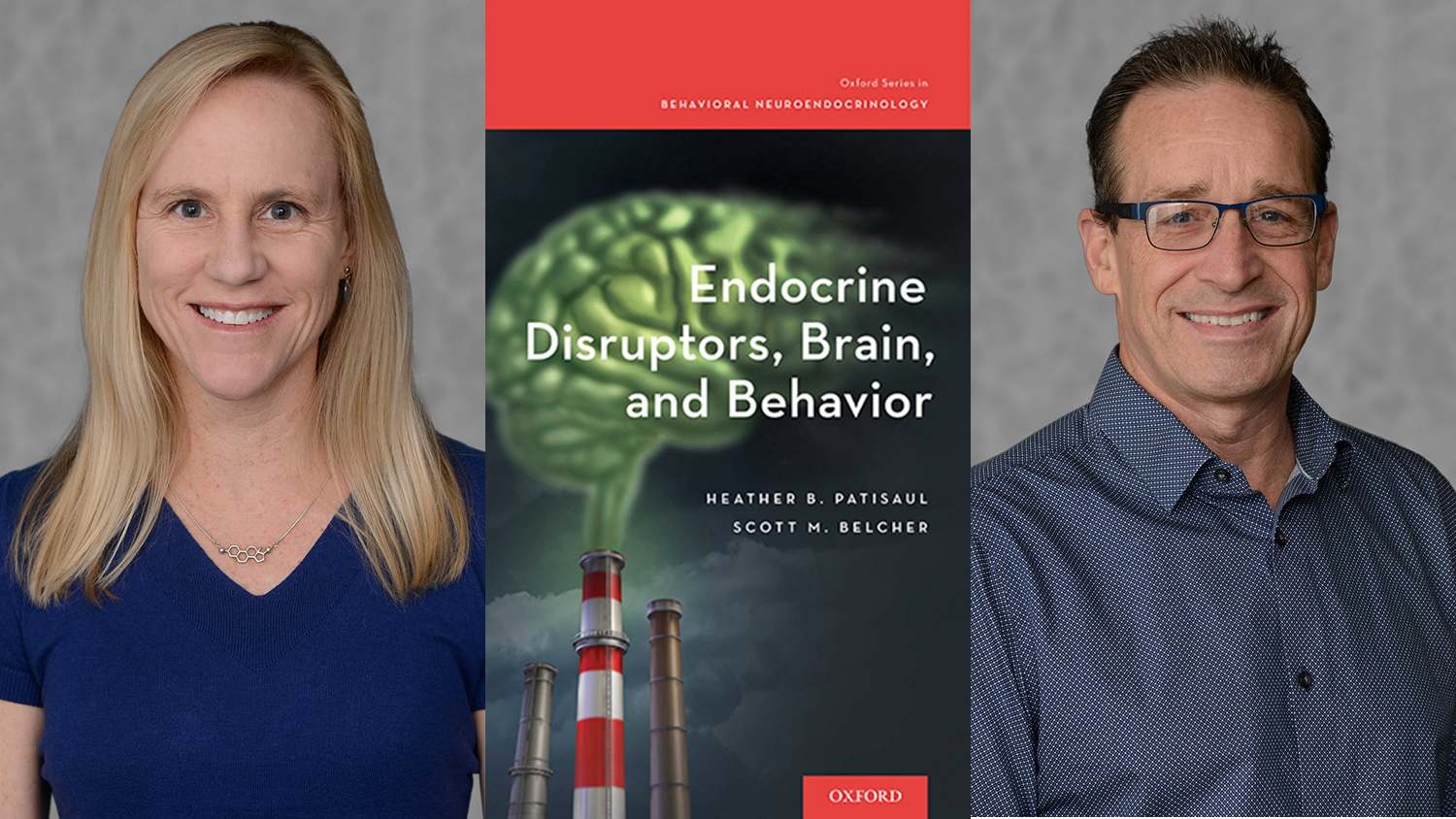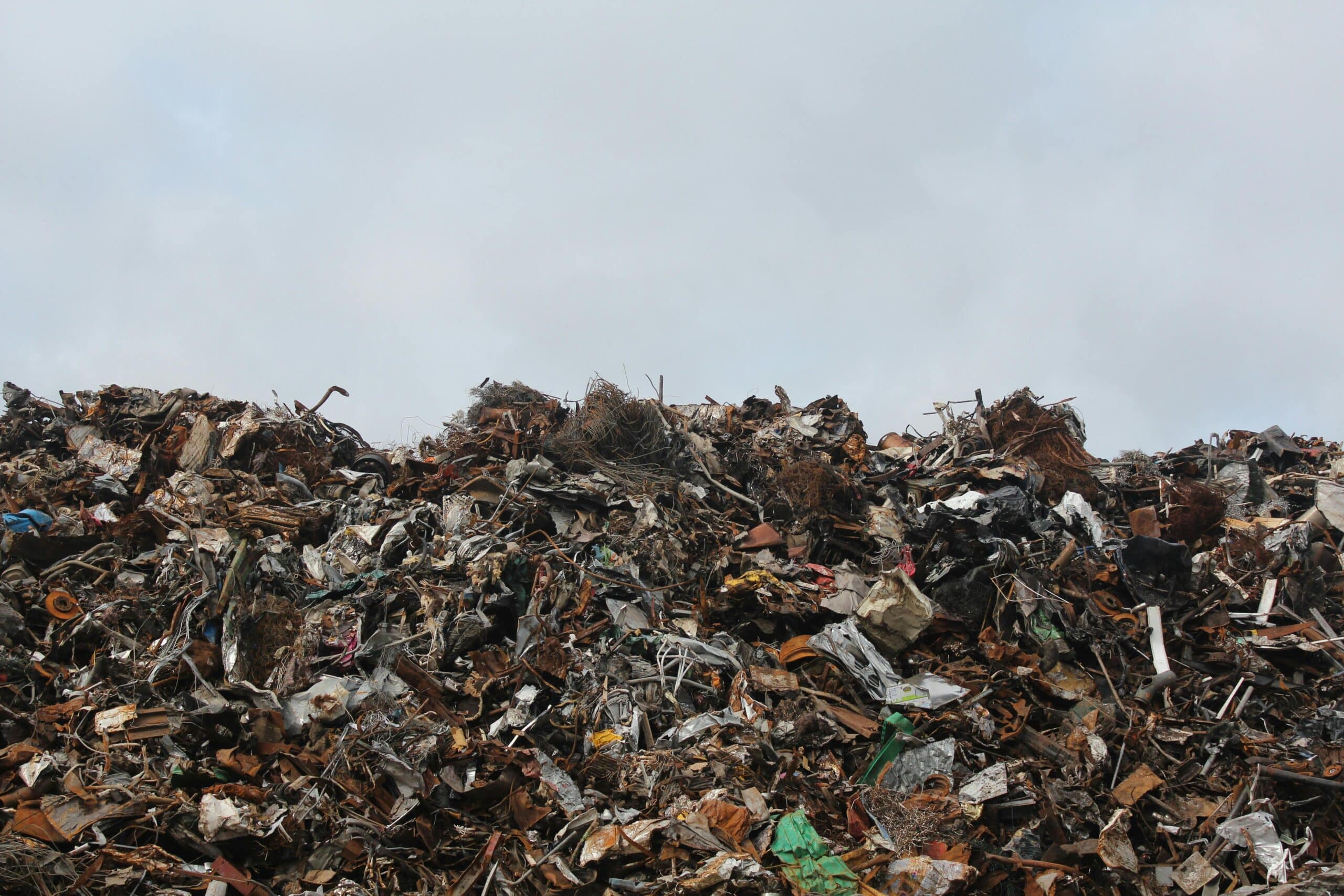Why Endocrine Disruptors Are Scary – And What You Can Do About It

You may have read stories about concerns that the chemical bisphenol A (BPA) used in baby bottles may pose developmental problems for youngsters. Those concerns were based on the fact that BPA is an endocrine disrupting compound, or EDC. And while many BPA-free bottles are now on the market, there are thousands of other EDCs out there. And there’s a lot we don’t know about them.
Two of the researchers who are working to shed light on EDCs are Heather Patisaul, a professor in NC State University’s Department of Biological Sciences, and Scott Belcher, a research professor in the same department. They are also the authors of the book Endocrine Disruptors, Brain, and Behavior, which will be published in April by Oxford University Press.
Their book not only offers insights into the nature of EDCs, but discusses why they are so widespread – and what everyday consumers can do to limit their exposure. And those are the same things we picked their brains about recently.
The Abstract: Endocrine disrupting compounds (EDCs) affect the endocrine system, which many folks think of as the hormone system, right? What exactly do hormones do in the body?
Heather Patisaul: Hormones do a lot of different things in the body to develop and regulate systems fundamental to life and living, including reproduction, metabolism, growth, sleep and response to stress. We have many different hormones in our body, including estrogen, androgen (testosterone), insulin and thyroid hormone. EDCs are compounds which interfere with hormone function.
Scott Belcher: There are also other hormones that control when we feel like eating and control when we feel like we have eaten enough. Most of our hormone systems work together and influence the effects of each other.
TA: How does the role of hormones in the body change as we get older?
Patisaul: During development, hormones play a critical role in the organization of many organs, including the brain. For example, estrogen and androgen are critical coordinators of sexual differentiation in the developing brain. Thus if hormone action is disrupted during these “critical windows of development,” permanent effects can result – including infertility or cognitive impairment. Hormones are also important for coordinating puberty, including the growth spurt which occurs at that time, and maintaining our adult reproductive physiology. As we age, our hormones help us maintain homeostasis.
Belcher: Hormone levels also change during aging. As part of the aging process, levels of many hormones decrease with age. Decreasing estrogen levels in women result in menopause, and testosterone decreases in men after 30 years of age. These are two of the best known changes that occur with age. There have been few, if any studies done on the effects of EDC exposures during aging.
TA: How do EDCs interfere in this process?
Patisaul: EDCs can act in several ways, including mimicking or blocking the actions of hormones. EDCs can also disrupt the activity of hormone receptors or the metabolism and clearance of hormones from cells and tissues. Understanding all of the different ways EDCs disrupt hormone action remains the subject of intense investigation.
TA: Are these EDCs all man-made compounds, or are they naturally occurring substances?
Patisaul: EDCs can be naturally occurring compounds or man-made. Phytoestrogens, found in soy and other legumes, are probably the best known naturally occurring EDCs. These compounds are more potent estrogen mimics than BPA, PCBs and most other manmade EDCs we worry about.
TA: How are people exposed to EDCs? Is it in our food, in our water, or what?
Patisaul: All of the above. People are exposed to EDCs in a myriad of ways, including dermally from the personal care products we put on our skin and hair, such as hand lotion. We also breathe them in. The fragrance mixtures used in scented products frequently contain EDCs. Finally, we ingest them either from food that naturally contains them or products which have been contaminated during processing, or from the packaging.
TA: Is this a problem that’s getting worse? Or is this a longstanding problem that we are only now becoming aware of?
Patisaul: This is a difficult question to answer because we know so little about when and where chemicals are developed, commercialized and used. Formulations of cosmetics and other personal care products change all the time, making it difficult to track which contain chemicals of concern and how much. The pace of chemical development and use is accelerating so I surmise this is a problem that is only going to get worse, particularly since we do not have a very effective chemical screening or management policy in this country.
Belcher: As science has been getting better at detecting chemicals in the body, we now know that the number of different man-made chemicals we are exposed to is rising. At any one time we have hundreds to thousands of chemicals in our system. The toxicity of many have not been determined and some fraction of those are certainly EDCs.
TA: From a policy standpoint, what can – or should – be done to address this?
Patisaul: We could certainly do a lot better. Some would argue our regulatory system is completely inept and corrupted by industry influence. Products without the most notorious EDCs are manufactured and used in other countries, like the EU, but not here. This proves that companies are capable of developing safer products. Unfortunately, there is no incentive to do so. And when considering new regulatory actions, protection of profits almost always trumps public safety.
TA: In your opinion, what obstacles stand in the way of policy change?
Patisaul: Money. The biggest obstacle to change is money. Companies and industry trade groups spend millions of dollars lobbying and contributing to political campaigns. In the battle between precautionary interventions in the interest of public health, and reining in big business, business almost always wins.
TA: What about things we can do as individuals? Is there anything we can do to reduce our exposure, or our children’s exposure, to EDCs?
Patisaul: Thankfully, yes. Consumers have more access to information than ever before. There are numerous databases and websites available to help consumers shop for safer products. Consumer demand has also driven change at the retail level. A notable examples is the Policy on Sustainable Chemistry in Consumables, which Walmart developed in cooperation with the Environmental Defense Fund and other non-profit groups. Target is doing something similar. Resources like the GoodGuide and SkinDeep can help consumers navigate the chemical landscape product by product.
TA: What are some of the outstanding research questions that need to be tackled in this field?
Patisaul: We do not have a good handle on the effect of chemical mixtures, nor have we been able to successfully link specific exposures to specific neural diseases such as autism or ADHD. Impact on neuroimmune function is currently a hot topic, as is epigenetic change and the potential for multi- and trans-generational effects.
TA: What are your labs working on now, and how do those efforts address the research challenges you just outlined?
Patisaul: My lab is working to understand how early life exposure to fire retardants impacts the developing brain and, consequently, behavior. We’ve become interested in the role of the placenta and how EDC exposures might disrupt neuroendocrine signaling between this ephemeral organ and the developing brain. We’re also using some novel animal models to explore how developmental exposures alter sociality and the social brain.
Belcher: My lab has been completing studies that look in more detail at how BPA affects different organs including the effects on the heart and immune systems. We are also working on determining the role of estrogens in regulating the growth and development of childhood brain cancer. Those studies have now shown in animal models of pediatric brain cancer that antiestrogen drugs can decrease tumor growth, and that estrogen-like EDCs may increase tumor growth and limit the effectiveness of chemotherapy.
- Categories:


